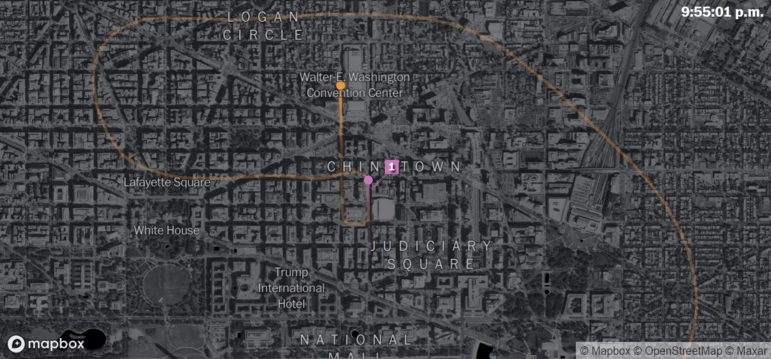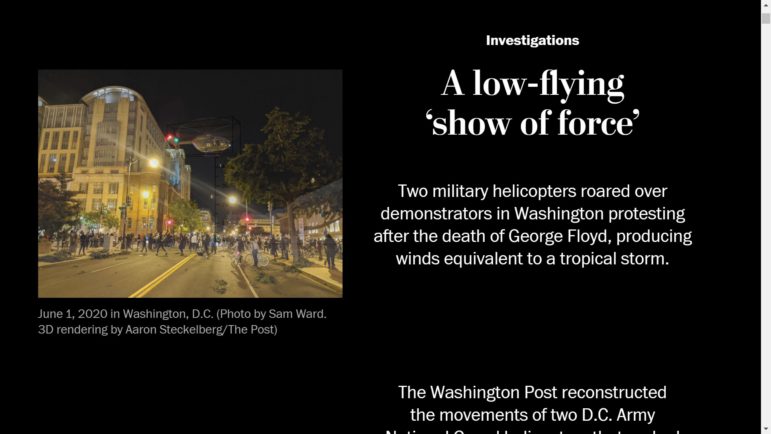

Document of the Day: Monitoring Helicopter Movements During DC’s Protests
Read this article in
 A story by The Washington Post called A Low-flying ‘Show of Force’ focused on two military helicopters that roared over demonstrators congregating in Washington, DC, to protest the death of George Floyd in police custody.
A story by The Washington Post called A Low-flying ‘Show of Force’ focused on two military helicopters that roared over demonstrators congregating in Washington, DC, to protest the death of George Floyd in police custody.
Their investigation reconstructed the movements of the National Guard helicopters on the night of June 1, and found that by hovering over the protesters in Chinatown the choppers produced winds equivalent to a tropical storm. The aircraft were so low, that people living in the condos nearby said they could see the soldiers night-vision goggles.
Witnesses told the Post the gusts produced by the helicopters snapped thick tree limbs and mingled with dust and broken glass in the air. Human rights and military law experts told reporters the move was a show of force more commonly used to disperse civilians in war zones.
The Washington Post’s Investigates team shared the exploratory scripts used to analyze and visualize flight data for the aircraft monitoring protesters in the city that day.
On the software development platform GitHub you’ll find:
- data – geojson, kml, csvs, shapefiles, and images detailing aircraft locations
- html – various maps generated with Leaflet and Mapbox to explore the data visually
- scripts – R scripts to process and adjust the data, as well as generate exploratory maps in 3D and in leaflet, mapbox, and rayshader.
- tif – Where tif files used to generated the base of 3D imagery would go. But files are too large for Github to store so this folder is blank.
You’ll also find methodology on the team’s calculations, how they used photos and videos to support their investigation, and tools for flight tracking.










